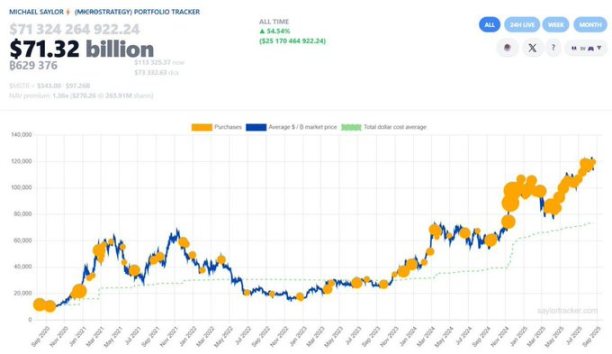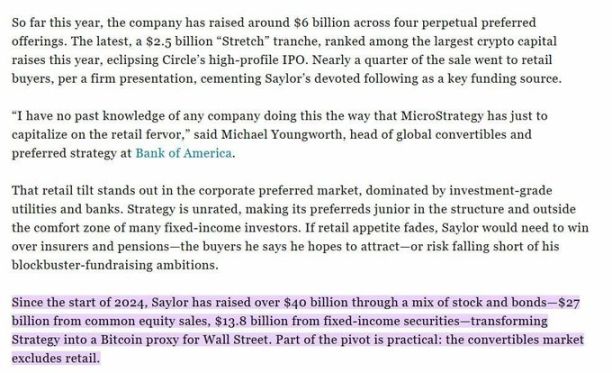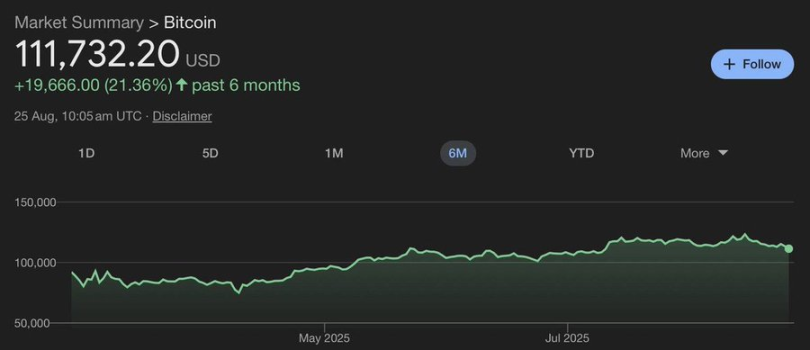If MicroStrategy Collapses: Would Saylor Selling $70 Billion Worth of Bitcoin Trigger a Market Crash?
In the crypto world, if you have ever paid attention to Bitcoin, you must have heard of Michael Saylor and MicroStrategy. Since August 2020, MicroStrategy has accumulated a total purchase of 629,376 BTC, which is worth about $71.6 billions at current market value, with a purchase cost of about $46.15 billions.

The question is, where does Saylor’s “ammunition” come from?
Sources of Funds
1️⃣ Convertible Debt
MicroStrategy has issued convertible bonds multiple times. These bonds have extremely low interest rates (1.25%-1.5%) and can be converted into shares in the future. So far, more than $6 billions have been raised through this method, with annual interest expenses of about $75 million–$90 million.

2️⃣ Equity Offerings
The company has raised more than $27 billions by issuing common and preferred shares. Although this dilutes shareholder equity, it has provided most of the funds for BTC acquisitions.

3️⃣ Cash Reserves
From 2020 to 2021, the company also used its own cash to purchase BTC.
Where are the risks?
On the surface, MicroStrategy holds $70 billions worth of Bitcoin, seemingly rock solid. But a deeper look at its financial structure reveals some issues:
Neither debt nor equity issuance is collateralized by BTC;
BTC holdings do not generate any yield and cannot directly repay debt or interest;
The company’s annual revenue is about $460–480 million, which is negligible compared to its debt scale;
Since 2025, Bitcoin’s price has risen by 24%, while MicroStrategy’s stock has only increased by 13%, significantly underperforming. The rise of ETFs is diverting demand away from MSTR.
If the stock price remains weak and the company continues to issue more shares, it will only further dilute shareholder value, entering a “death spiral.” Ultimately, Saylor may be forced to press the red button—selling BTC to repay debt.
This would be the scenario the market least wants to see:
If MicroStrategy sells, it could trigger the most brutal chain collapse in crypto history.

Is there still a turnaround?
In the short term (6–12 months), there are still two major potential supports:
1️⃣ BTC Price Increase: If Bitcoin’s price continues to rise, it will boost MicroStrategy’s net asset value and stock price, helping it to further raise funds.
2️⃣ Inclusion in the S&P 500: If MicroStrategy successfully enters the S&P 500 in Q3 2025, it is expected to attract $20–30 billions in capital inflows by Q1 2026. This will bring more equity offerings and more BTC purchases, thus supporting the bull market.
In other words, as long as the Federal Reserve does not resume rate hikes and market sentiment remains optimistic, this game can still continue.

Conclusion
There has always been controversy in the market regarding the “collapse theory” of MicroStrategy. In fact, the bears are often the same group of people who were bullish on Luna and FTX back in the day.
Rather than being swept up by panic, it’s better to recognize reality:
Short term: With the help of financing and the potential S&P 500 inclusion effect, MicroStrategy still has room to push BTC higher.
Long term: Once liquidity tightens or the stock price continues to fall, risks will accumulate and erupt.
In the crypto market, the biggest mistake is not predicting a collapse too early, but being swept up by noise, selling at the bottom, and eventually buying back at the top. Before Q4 2025, perhaps the more rational choice is—observe, hold cautiously, rather than panic blindly.
Disclaimer: The content of this article solely reflects the author's opinion and does not represent the platform in any capacity. This article is not intended to serve as a reference for making investment decisions.
You may also like
From Sahara to Tradoor: A Review of Recent “Fancy Drop” Tactics Among Altcoins
The End of Ethereum’s Island: How EIL Reconstructs Fragmented L2s into a “Supercomputer”?
XRP's price beginning to show promise above $2.15: Here’s why

